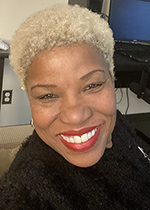 Previous contributor Rachel Lachmansingh talks with the winter issue #221 contributor about building on an opening idea, stopping when you feel a piece is done, and exploring the mother/daughter dynamic in her story, "Tasting Colour."
Previous contributor Rachel Lachmansingh talks with the winter issue #221 contributor about building on an opening idea, stopping when you feel a piece is done, and exploring the mother/daughter dynamic in her story, "Tasting Colour."
RL: What was your inspiration behind writing about pica?
JJ: First off, I wanted to write a story about a woman who’s labeled as “crazy” partly because she sees the world through her unique prism, one full of colours. Also, I had learned about pica during one of my pregnancies, how it drove some people, pregnant women included, to eat things not usually seen as food. I decided to incorporate the disorder into the story as the Mother’s way of internalizing colour, by eating chalk.
RL: The relationship between mother and child in your story is especially poignant. What was your experience writing this dynamic?
JJ: I’m always fascinated by different experiences of the mother/daughter dynamic. I wanted this story to explore how our mothers, however flawed they might have been, can leave us with powerful memories and feelings of connection.
RL: “Tasting Colour” is an impressively compact piece. How do you approach writing such short fiction?
JJ: I suppose I approach all writing with an opening idea or concept, whether poetry, plays or short fiction, then I build on it as I write hoping it all gels together. In this case, I wrote the first sentence a couple of years ago then sat down one evening and started writing until I was finished the first draft. Of course, I went back at it a few times afterwards until I had a draft I felt was done.
Read the rest of Joanne John's interview as well as a short excerpt.